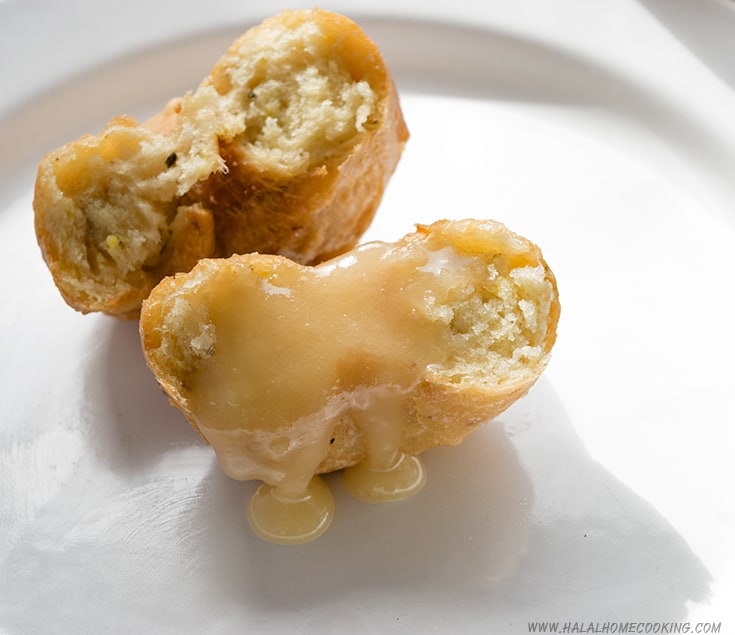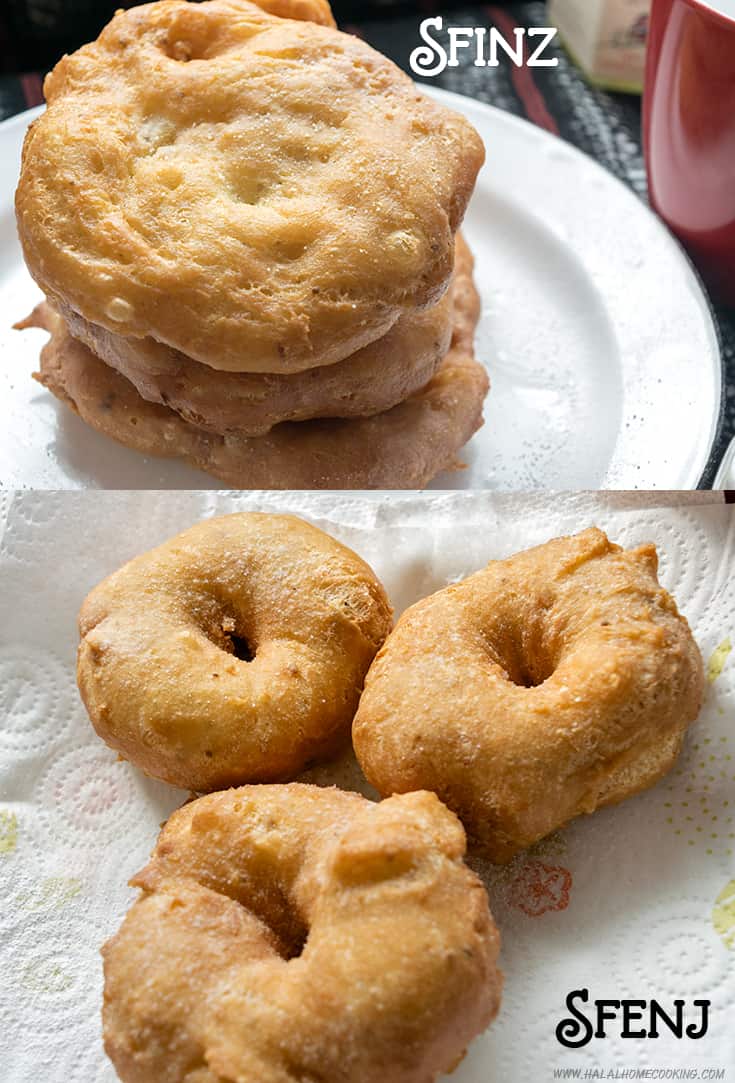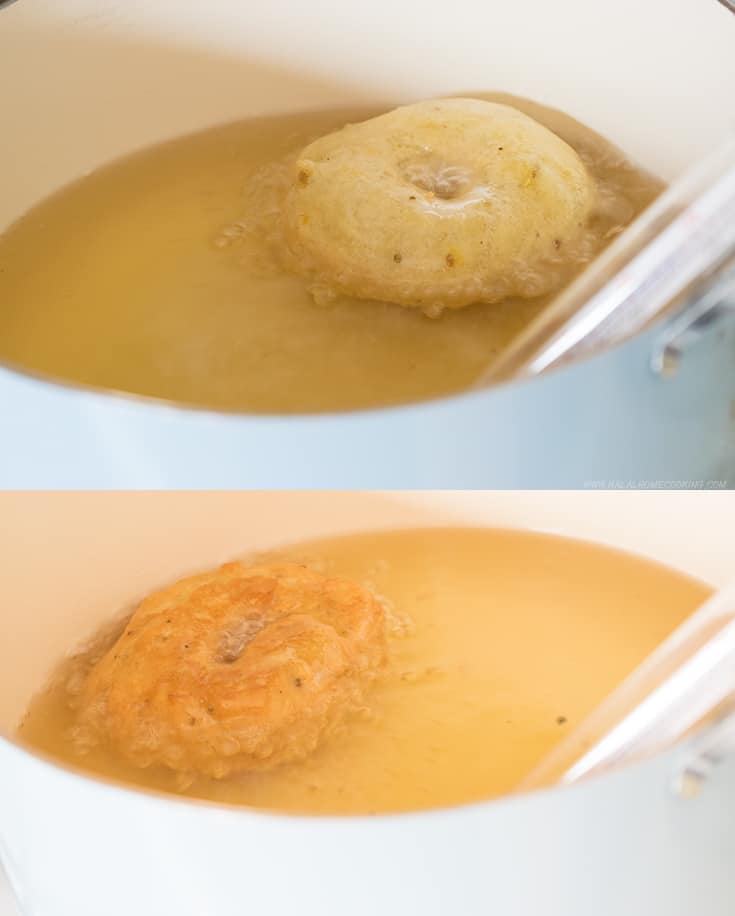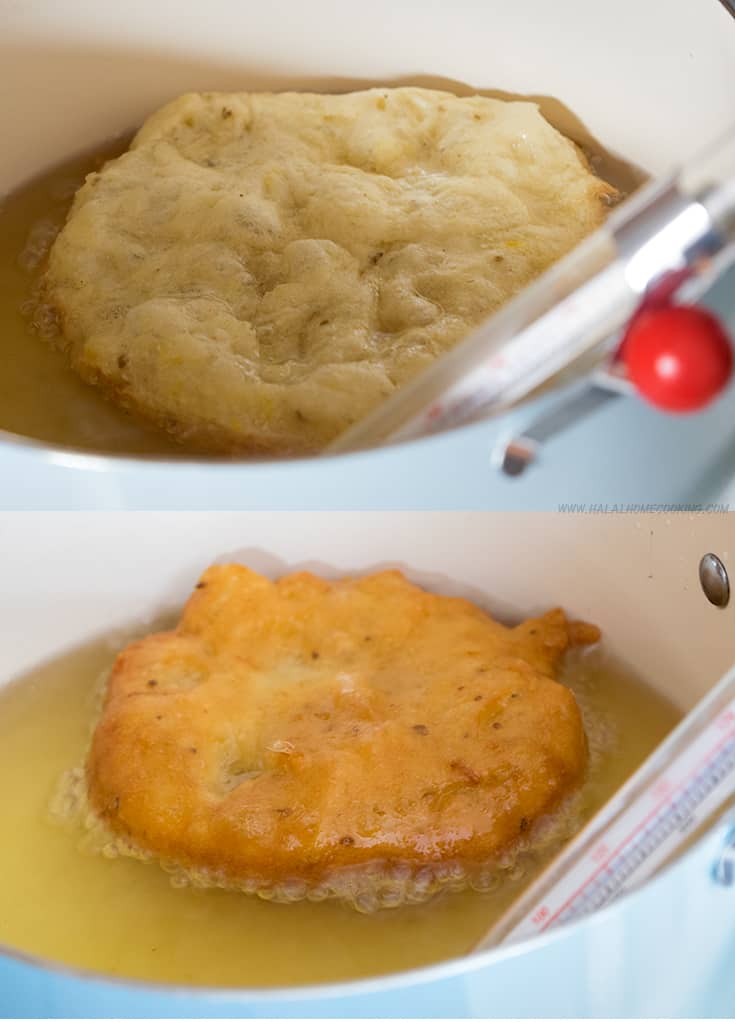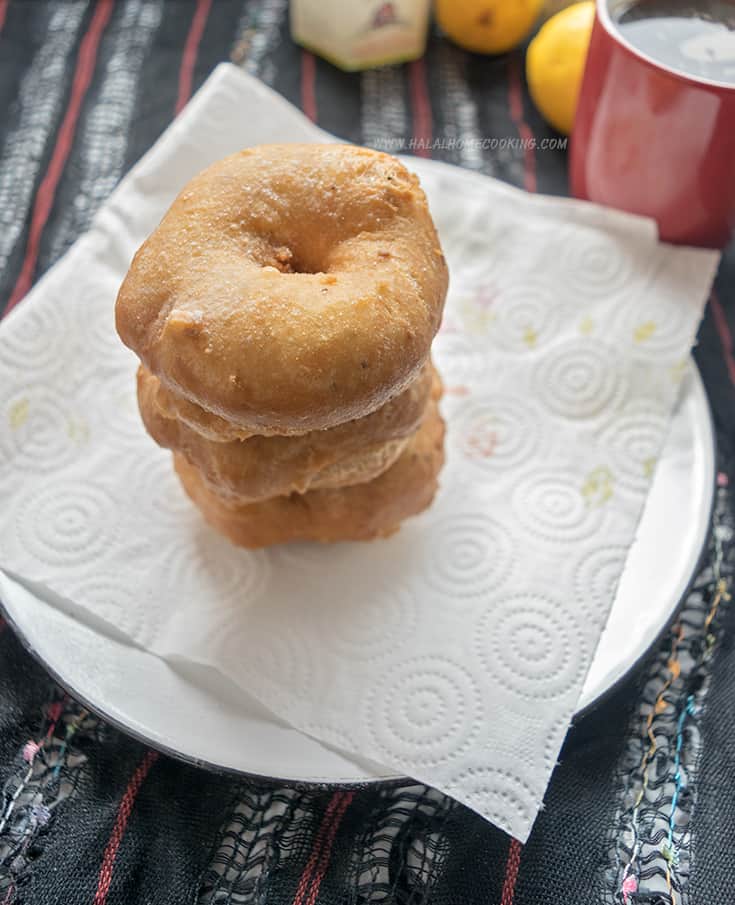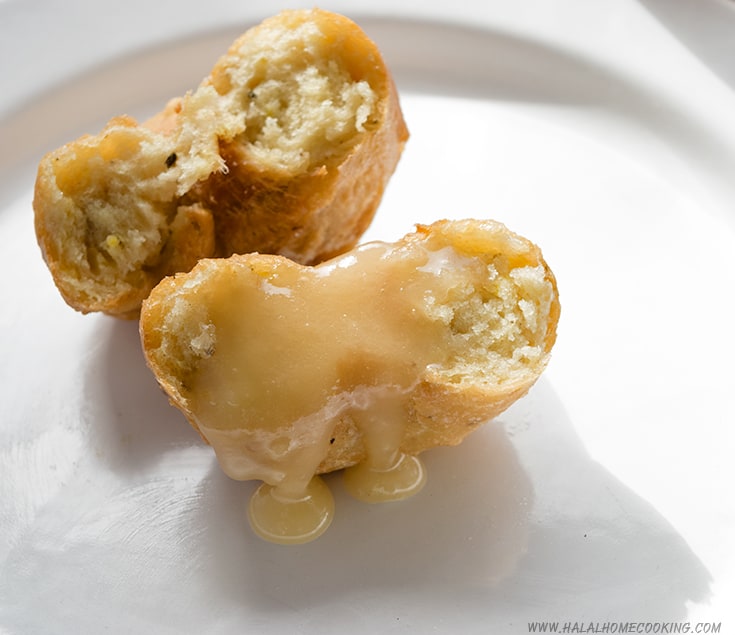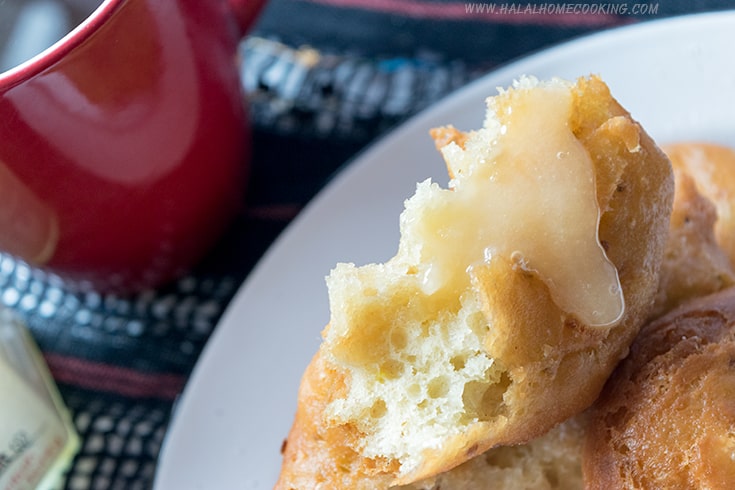Sfinz / Sfenj – North African doughnuts. MENA Cooking Club challenged us this month with 3 dishes from Libya; a soup, a stew/tagine and North African doughnuts / fried bread.

I’ve cooked a lot of soups and stews from neighbouring Algeria but that didn’t stop me trying the Libyan lamb, carrot and green olive tagine.
I made my recurring tagine mistake of halving all the ingredients so that the tagine would serve fewer people but this meant I was left with little sauce, which you can’t see is mostly hiding underneath the meat and oh couscous the sucker! Note to self: always keep the same amount of liquid and spices as per the original recipe but cut the amount of meat / veg as required.
Out of the frying pan and into the fire deep fat fryer, no rather a deep saucepan with an oil thermometer.
In Morocco and some parts of Algeria they are known as Sfenj/Sfendj or khfaf and are round with holes like traditional doughnuts, in Tunisia they are known as yo yos and still round but in the shape of large onion rings, usually orange flavoured and soaked in honey syrup after frying . In Libya they are known as Sfinz, round circular fried breads without the gaping doughnut hole in the middle.
Recipes vary from region to region, country to country but more often than not North African doughnuts are made from unflavoured, slightly sweetened or unsweetened, sticky, yeasted bread dough and can be made sweet by serving with a dusting of icing sugar and honey, date syrup for dipping or savoury by serving with cream cheese or as the libyans do it, cooking an egg on top of the bread as it’s frying.
Sfinz in Libya are typical Friday / Jummah breakfast fare but of course they can be eaten anytime, anyday you fancy! In the afternoon they would be typically served with green tea but hey I’ve recently become a bit of an afternoon coffee drinker. Whilst I appreciate the plainer things in life I also like playing around with flavour. With intentions being of the sweet kind I made anise seed and lemon flavoured Sfinz / Sfenj. The lemon flavour didn’t come through as much as I’d hoped but the anise seed brought heaps in terms of aromas and hints of licorice.
Libyan food culture
Food in Daily Life. Food in normal daily life reflects the simplicity of peasant and nomadic life styles. Libyan cooking styles are similar whether rural or urban, sedentary or nomadic. Main courses are almost always one–pot dishes. Couscous (cracked wheat), the national dish, is prepared in a spicy sauce of hot peppers, tomatoes, chick peas, and vegetables in season. All meals are eaten out of a communal bowl. Meals are of great symbolic importance; in the houses or the tents of prominent men, the major meal of the day rarely is taken without invited guests. Most meals are frugal and simple with the daily consumption of meat kept to a minimum. The Bedouin rarely consume meat more than once a month. Agriculturists always seem to have adequate supplies of fruit, vegetables, and grain. Nomads have an abundance of milk, dates, and grain in most seasons. In both town and desert, meals are ended with three glasses of green tea, preparation and consumption of which is a distinct ritual.
Food Customs at Ceremonial Occasions. Meals are prepared by the women of the household and served to guests by the young men of the household. Food is served on long low tables, tall enough to allow guests to sit cross legged and to belly up to the edge. Meals served in the tented society vary slightly from presentation in towns. In tented society, important guests are honored with a sacrificial slaughter of a goat or sheep. In towns, sacrifice is not as frequent because there usually is easy access to daily markets. The animal is butchered, and the flesh is boiled to form the essential ingredient of a stew to be served over couscous . Sometimes various types of pasta may be used as a substitute for couscous . The main course usually is preceded by dried dates, milk, and buttermilk. Each liquid is served in a large communal bowl. Libyans drink green tea after all meals and throughout the day. Lavish meals are prepared for almost all ritual occasions. Special and elaborate meals are prepared daily during the month of Ramadan when the daily fast is broken by a meal after sunset. Read more: http://www.everyculture.com/Ja-Ma/Libya.html#ixzz3WpNJNv00
On a warm spring day I was deep-frying these doughnuts and getting hotter by the second but that didn’t matter after I’d tasted these. Texture-wise the dough is very wet, sticky and hard to handle but the resulting texture is only what can be described as fried focaccia, but better! It’s springy and light inside with a crisp, crackly exterior. I prefer Sfenj – the more traditional doughnut shaped variety compared to the Sfinz – round discs that I found were greasier. It could be due to my cooking of the Sfinz but I doubt it as I was using an oil thermometer and really tried to keep the temperature constant throughout the cooking process. Jump up and make these as soon as possible, it’s only a 3 hour (minimum) rise!
Sfinz / Sfenj
Ingredients
- 2 cups strong white bread flour
- zest of 1 unwaxed lemon *optional
- 1 teaspoon anise seeds, ground *optional
- 1 teaspoons salt
- 1 teaspoon baking powder
- 1/2 tablespoon fast-action dried yeast
- 2 teaspoons sugar
- 2 tablespoons olive oil for the dough
- 1/2 cup warm milk and 1/2 cup warm water
- sunflower oil for deep frying & handling dough
- powdered/icing sugar
- RAW Honey
Instructions
- In a large bowl or the bowl of your stand mixer fitted with dough hook combine flour, zest, anise seeds. Add salt, mix (i use a butter knife), add baking powder, mix and then sprinkle yeast and sugar over flour and give it another thorough mix before making a well, add oil and milk/water. If using stand mixer, on low speed bring the dough together and then increase to knead for 5 minutes or until soft and smooth. If in a large bowl oil your hands well and knead for 10 minutes. Oil hands again and shape dough into a ball making sure it’s well oiled then cover bowl with clingfilm and leave to rise 3 hours minimum at room temperature or maximum overnight.
- With oiled hands knead / knock the dough so it falls, then divide into 6 balls, cover and leave to rest for 15 minutes as you warm the oil to 180C (don’t let it drop below 170 or go above 190C) When the oil is getting up to temperature we will start to shape the dough.
- For Sfinz oil a plate (i recommend a side plate) put one ball of dough, flatten to roughly same shape/size of plate, oil your hands as needed. The edges should be a bit thicker than the center, like a pizza base.
- For Sfenj, shape into smooth even ball then with a oiled handle of a wooden spoon make a hole in the middle and stretch it a bit because the hole will close slightly when doughnuts are being fried.
- Fry Sfinz / Sfenj in hot oil until both sides are golden brown, carefully flip/turnover once.
- Remove from oil and drain on kitchen towel, dust with icing sugar and serve with honey.
Notes
for plain (more traditional) north African doughnuts leave out the lemon zest and anise seeds
